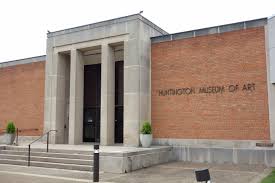Oct 29 2017 - Feb 19 2017
Huntington, WV
The Spanish conquest of Peru in the 16th century brought massive changes to the culture of the region. In addition to the political upheaval that took place, changes in the social and cultural fabric were immense. Backed by Spanish military might, a forced conversion of language, religion, and economic structures took place. Included among the changes was an alteration of the robust artistic tradition that had existed under the Incas and other cultures in the region.
Inca culture, especially in cities such as Cuzco and Lima, had long employed painters to decorate textiles, ceramics and wooden objects and to create murals. When the Spanish arrived, they introduced the concept of oil painting into the culture and utilized the talents of local artists to create works of art that reflected European religious and aesthetic values. Using printed images of European paintings as source material, the artists created a regional style that often included elements of Andean religion and culture within the portrayal of Christian-themed subjects. In addition to serving as suppliers to a thriving market for paintings to hang on the walls of the homes of European settlers, the artists were employed to decorate churches and government buildings in the region.
The Huntington Museum of Art has a small collection of these paintings that was a gift of Jack Neal, Sr. and Irene Caldwell Neal, and Jack Neal, Jr. and Claudia Neal in 1995. The works are primarily religious in nature and are often embellished with the personalized style of the region through representations of native flowers and birds.
Credit: Exhibition overview from museum website
Whether or not you go, The Virgin of the Andes: Art and Ritual in Colonial Cuzco reveals how -- following the Spanish conquest of the Inka empire in 1532 -- the native people were obliged to recognize the king of Spain as their ruler and to accept the teachings of the Christian faith. This illuminating study shows how the artists of post-conquest Cuzco combined European styles of painting and iconography with ancient Peruvian traditions to forge an original Andean Colonial goddess - the Virgin of the Andes. By the early years of the 17th century, the native artists of Cuzco established their own school, the first indigenous organization of artists in the New World. While most studies of the school of Cuzco are written from the European perspective, the author uses records and contracts located in Peruvian archives to investigate the meanings of the Virgin of the Andes to the native people of Cuzco.The rich spendor of Cuzco paintings, characterized by lavish gold ornamentation and elegantly painted jewels and feathers, is beautifully illustrated in over 40 color plates.
Exhibition Venues & Dates
Oct 29 2017 - Feb 19 2017
Huntington, WV

